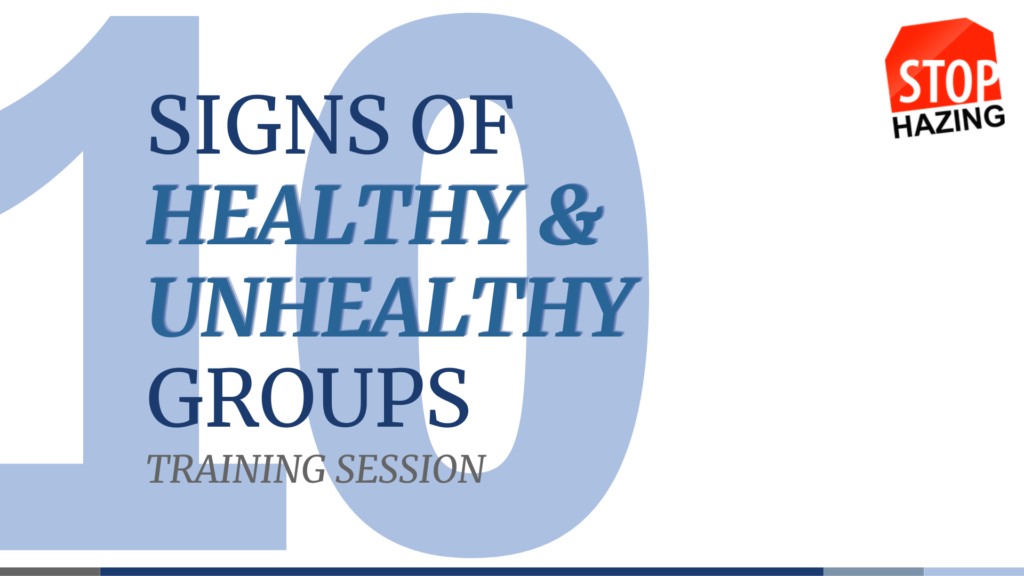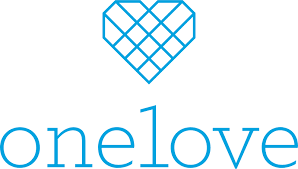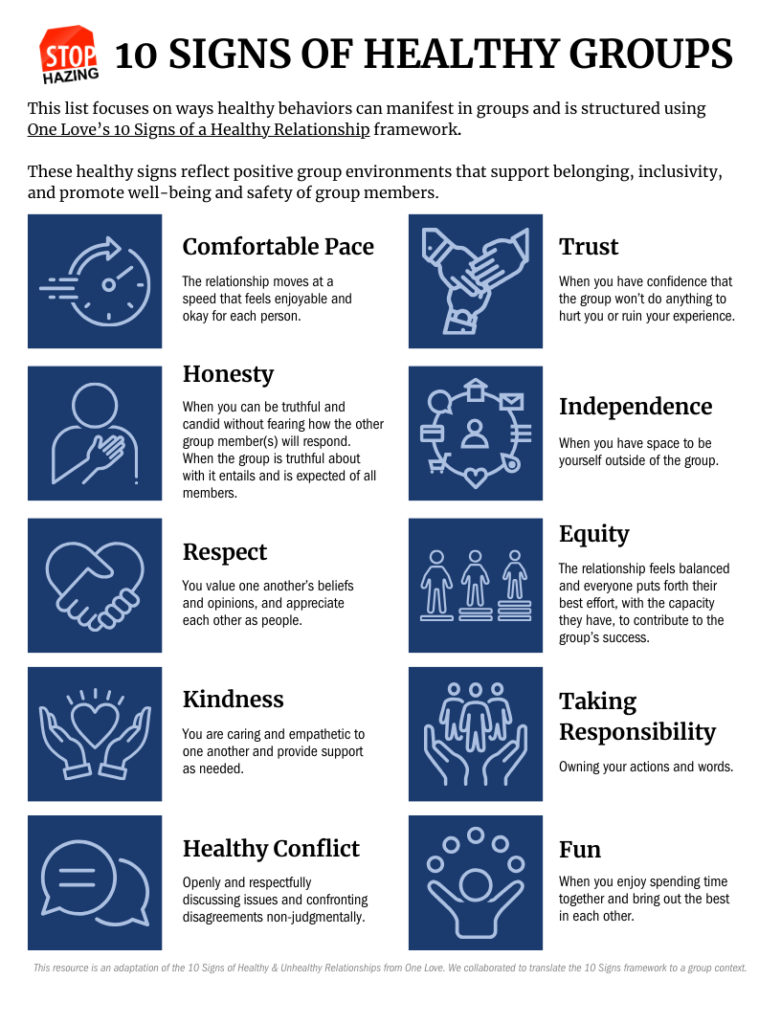10 Signs of Healthy & Unhealthy Groups Training
10 Signs of Healthy & Unhealthy Groups Training: Workshop Facilitation Materials
Facilitation Guide

Description:
This workshop and training guide explores the 10 signs of healthy and unhealthy groups and behaviors and uses discussion and “Gut Check”’ scenarios to promote learning. This workshop is complete with developed presentation slides, speaking notes, and a facilitation roadmap to support the session. Additional information about hazing, hazing prevention, and how building healthy groups is a form of prevention is included, as well as discussion questions to support and engage the audience in reflection and conversation.
Duration: 90 minutes
Learning Outcomes:
- Describe how hazing is defined including 3 key components
- Recognize hazing behaviors along a continuum (Spectrum of Hazing™)
- Identify signs of healthy and unhealthy groups
- Summarize how unhealthy signs and hazing can relate
- Discuss ways hazing can negatively impact individuals, groups, and communities
- Explain how a group member can help to create and maintain healthy group relationships and mitigate unhealthy behaviors
Overview of the Training:
- Introductions, Learning Outcomes, and Community Guidelines
- About Hazing: Definition & Components
- Hazing Prevention Resources & Education
- 10 Signs of Healthy Groups
- 10 Signs of Unhealthy Groups
- “Gut Check” Scenarios: Healthy
- “Gut Check” Scenarios: Unhealthy
- Discussion Questions
- References & Acknowledgments
Additional 10 Signs Resources
1-Pagers with the 10 Signs of Healthy & Unhealthy Groups
These one-pagers are quick reference resources to learn more about the 10 signs. These could be standalone flyers, supports for a workshop, or reference guides.
Tabling Activities & Resources
You can use the 10 Signs of Healthy & Unhealthy Groups to plan fun tabling events! This resource can help frame an event or tabling activity that is engaging, fun, reflective, and promotes building healthy groups!
About the Collaboration & Material Development
The free toolkit, developed in 2022, was designed for use by school, campus, and organization professionals, student groups, and other leaders to shed light on how healthy and unhealthy behaviors can occur in a group context and within group relationships. Since the launch of the toolkit, StopHazing has built out complete training materials to facilitate a workshop (e.g., slides, facilitation guide, activities).
Building on One Love’s 10 Signs of Healthy & Unhealthy Relationships, StopHazing and One Love collaborated to use the same framework to consider the healthy and unhealthy behaviors of groups.
Both StopHazing and One Love are invested in interpersonal violence prevention and educating young people, adults in their lives, educators, and beyond; therefore, this resource is designed to highlight examples of healthy and unhealthy group behaviors and to provide workshop and discussion tools for furthering education and reflection on the importance of healthy groups.
These resources are not exhaustive in listing the ways healthy or unhealthy behaviors play out in groups. Additionally, it is important to note that not all unhealthy behaviors that manifest in groups are necessarily considered hazing, however, they may be warning signs and risk factors that may compromise young people’s safety, belonging and overall well-being. This resource is designed to make connections to the many intersecting issues within interpersonal violence prevention and groups, including hazing.
Notes for the Audience
The primary audiences for the toolkit and training include high school and college and university professionals, as well as formal and informal groups and teams, student-leaders, and adults in their support networks. Additionally, we encourage users to tailor the language and terminology to the audience or particular groups and communities represented. For example, when working with student-athletes or coaches, terms like: “veteran players,” “teammates,” and “rookies” might be used to describe group dynamics; whereas, a similar discussion relative to Fraternity and Sorority Life (FSL) would use terms like “new member,” “initiates,” “brother,” “sister,” “neophyte,” or “neo.” When communicating with a general audience, “student,” “student-leader,” and “student organization members” might be more appropriate.
Reference in part or full to this resource should provide attribution as follows:
StopHazing (2022). StopHazing’s 10 Signs of Healthy and Unhealthy Groups: Toolkit.
StopHazing (2023). StopHazing’s 10 Signs of Healthy and Unhealthy Groups: Workshop Facilitation Guide.
Questions about the resource or using it to inform practice? Contact meredith@stophazing.org
For more information about One Love, click here.
Learn more about One Love’s 10 Signs of Healthy & Unhealthy Relationships that this toolkit adapted.




